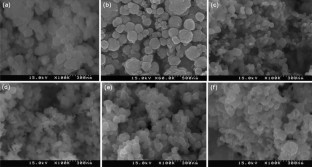
The exchange bias properties were found to be optimized at a concentration of 3.92 atomic percentages (at%) in relation to lower and higher at% Cu substitution in the chromia-based CSNs. Magnetic characterization shows that the Cu- and Al-substituted chromia-based CSNs of comparable concentration exhibit AFM-FM/FiM and predominantly AFM magnetic properties, respectively. The analysis of HR XPS (High resolution X-ray photoelectron spectroscopy) data confirmed the oxidation states of Cr, Cu and Al to be 3+, 2+ and 3+ respectively. The high resolution (HR) TEM images confirmed the formation of distinct core and shell regions. To produce thin copperZIF-8 core-shell nanowires (CuZIF-8 NWs), Cu NWs are stabilized using a pluronic F-127 block copolymer, followed by growth of ZIF-8 to obtain uniform core-shell structures. Rietveld refinement of the XRD data confirms continuation of corundum type structure throughout both core and shell. Here, a novel material for treating blown polypropylene filtration media used in medical-grade masks to impart antimicrobial activity is reported. The morphology, structure and size characteristics of the CSNs were determined using transmission emission microscopy (TEM) and x-ray diffraction (XRD). Past work with this material has shown strong biological efficacy for protecting solid wood and tree health ( e.g., Qi et al.


For synthesis of the CSNs, α-Cr 2O 3 nanoparticles were first grown using microwave assisted synthesis whereupon a hydrothermal nanophase epitaxy (HNE) method was used to incorporate Cu or Al in the chromia-based shell of the nanoparticles. Copper/carbon core/shell nanoparticles (CCCSNs) are a newly available type of industrial material that is prepared using a proprietary manufacturing technology (Lian and Wu 2012). The objectives of this study were to determine the role of the substituting (for chromium, Cr) element and of Cu concentration on governing the magnetic properties of the CSNs. Copper species in the structure of Cu/coreshell Al-MCM-41 catalysts prepared by different techniques of Cu loading-substitution (S), ion-exchange (E).

The particles were prepared in two steps, by first reducing copper. The structural and magnetic properties of copper (Cu) and aluminum (Al) -incorporated chromium oxide (α-Cr 2O 3, i.e., chromia) inverted core-shell nanoparticles (CSNs) were investigated. We have synthesized copper-gold, core-shell nanoparticles by the microemulsion method.


 0 kommentar(er)
0 kommentar(er)
